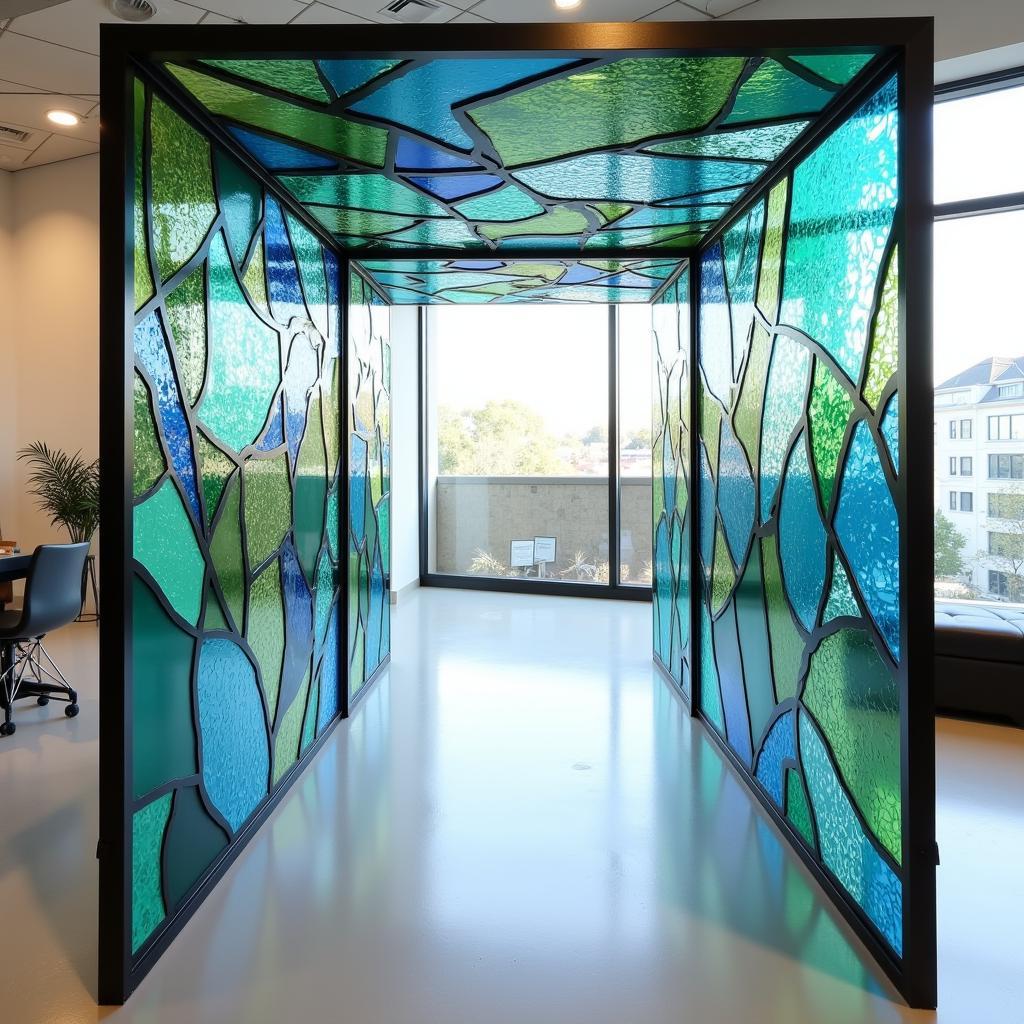Unveiling the Beauty of Catherine of Bologna Art
Catherine of Bologna, a revered 15th-century nun, is renowned not only for her spiritual devotion but also for her extraordinary artistic talent. Her artistic legacy, deeply intertwined with her faith, offers a fascinating glimpse into the intersection of religious iconography and personal expression. Let’s delve into the world of “Catherine Of Bologna Art” and explore the unique characteristics that define her captivating works.
The Life and Times of a Renaissance Polymath
Born in 1413, Catherine of Bologna was a woman of many talents. Aside from her artistic pursuits, she excelled in music, writing, and even preached eloquently. She joined the Poor Clares order at a young age, dedicating her life to spiritual contemplation and creative expression. Her artistic creations, primarily focused on religious themes, were deeply influenced by the prevailing artistic trends of the Italian Renaissance.
 Painting by Catherine of Bologna
Painting by Catherine of Bologna
Characteristics of Catherine of Bologna Art
Catherine’s artistic style, while reflecting the artistic currents of her time, possesses a distinct charm and individuality. Here are some defining characteristics of her artwork:
- Strong Religious Symbolism: As a devout nun, religious themes dominate her paintings. Images of the Virgin Mary, Christ Child, and various saints are recurring motifs, each imbued with symbolic meaning and emotional depth.
- Delicate Linework and Detailing: Catherine’s works often feature delicate linework and meticulous attention to detail. Whether it’s the intricate folds of a garment or the serene expression on a saint’s face, her precision adds a layer of realism and emotional resonance to her art.
- Vibrant Color Palette: Despite the solemnity of the subject matter, Catherine’s paintings are characterized by a surprisingly vibrant color palette. Rich blues, deep reds, and shimmering golds add a sense of divinity and otherworldly beauty to her compositions.
 Fresco by Catherine of Bologna
Fresco by Catherine of Bologna
The Significance of St Catherine of Bologna Art
Catherine of Bologna’s art transcends mere aesthetics; it serves as a powerful testament to her faith and creative spirit. Her paintings, imbued with a sense of serenity and spiritual depth, continue to inspire and captivate viewers even centuries later.
- Window into Renaissance Spirituality: Her art provides invaluable insights into the religious climate of 15th-century Italy. Her depictions of religious figures reflect the prevailing theological beliefs and devotional practices of her time.
- Legacy of Female Creativity: In an era when women artists were largely overlooked, Catherine’s artistic achievements stand as a testament to female creativity and talent. Her work paved the way for future generations of female artists to express their faith and vision through art.
Exploring Further: The Enduring Appeal of Clam Art
Interested in exploring other unique forms of religious art? Discover the fascinating world of clam art, where intricate carvings transform humble seashells into exquisite religious artifacts.
Conclusion
Catherine of Bologna’s art stands as a testament to the power of faith and creativity to transcend time. Her captivating paintings, infused with religious symbolism and artistic finesse, continue to inspire awe and wonder. As we immerse ourselves in the beauty of her art, we are invited to reflect on the enduring power of artistic expression and its profound impact on our understanding of faith, history, and the human experience.
FAQ
1. What are the most famous works by Catherine of Bologna?
While many of her works are found in Bologna, her most celebrated piece is arguably the altarpiece depicting the Mystic Marriage of St. Catherine.
2. Where can I see Catherine of Bologna’s art in person?
Many of her works are housed in museums and churches in Bologna, Italy, most notably the Pinacoteca Nazionale di Bologna and the Basilica of San Domenico.
3. What other artistic skills did Catherine of Bologna possess?
Beyond painting, Catherine was a talented musician, writer, and illuminator of manuscripts, showcasing her diverse artistic abilities.
4. Was Catherine of Bologna recognized for her art during her lifetime?
Yes, Catherine received commissions for her art and her work was well-regarded within religious circles.
5. How did the Italian Renaissance influence Catherine of Bologna’s artwork?
The Renaissance emphasis on humanism and naturalism is evident in her delicate linework, use of perspective, and emotionally expressive figures.
Need Assistance? Contact us at Phone Number: 02462573573, Email: danteum@gmail.com or visit us at Savico Megamall, 7-9 Đ. Nguyễn Văn Linh, Gia Thụy, Long Biên, Hà Nội 10000, Việt Nam. We offer 24/7 customer support.
Explore More: Delve deeper into the world of religious art by visiting our website. Discover fascinating articles on various artistic styles and movements.

